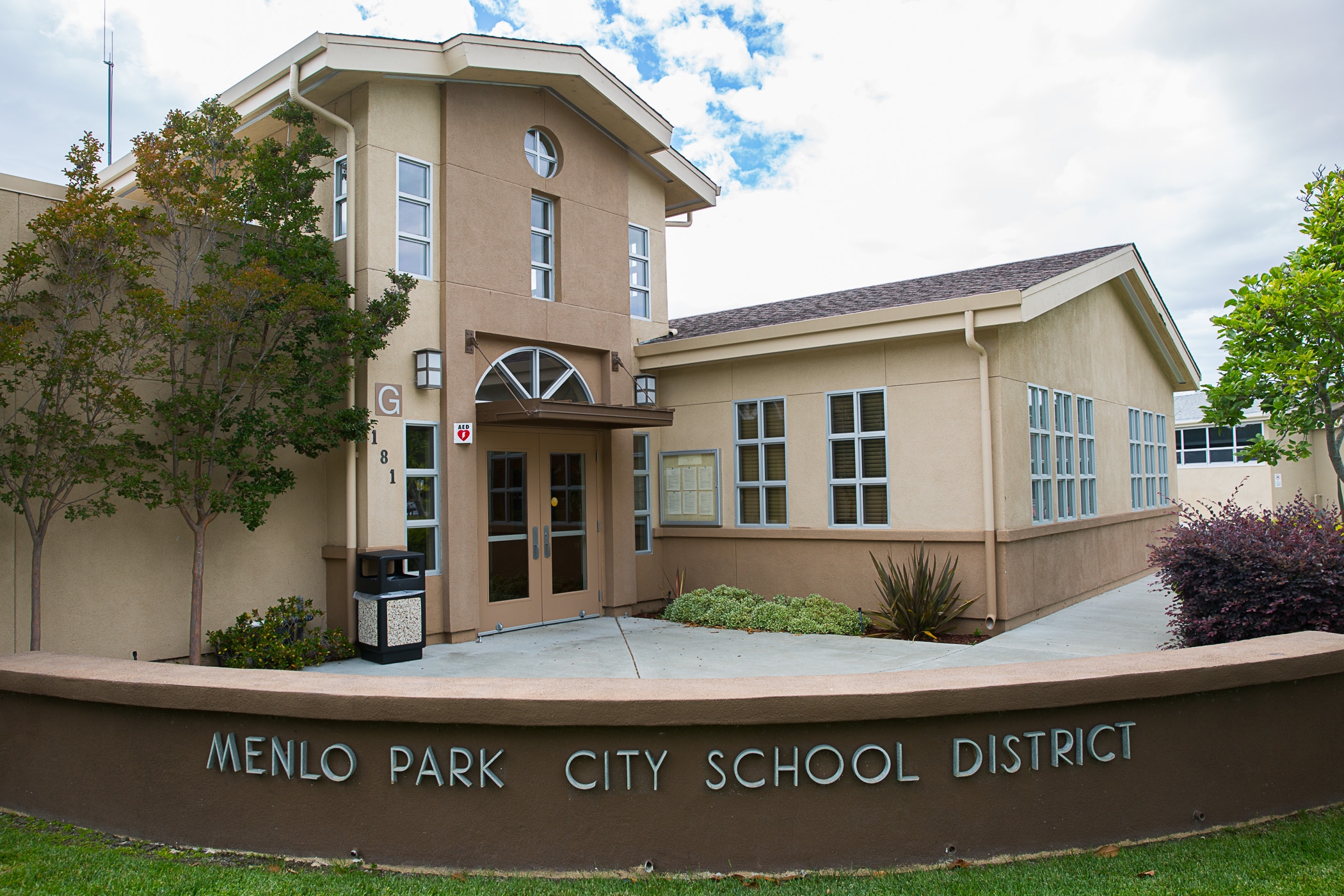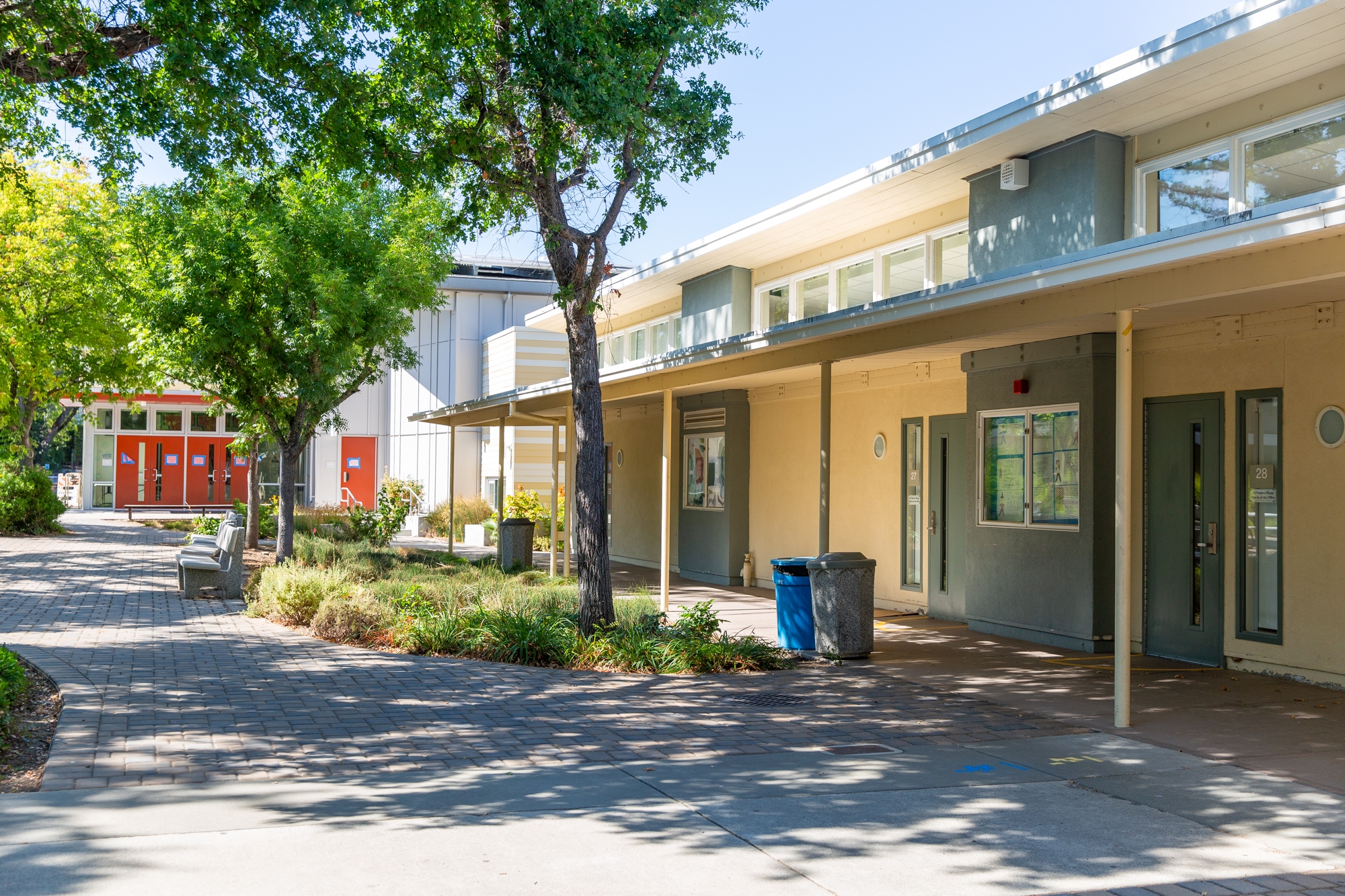Local school districts are facing increasing pension costs and higher spending to cover the safety costs to bring students back to campuses — which state and federal funds helped cover — amid the COVID-19 pandemic.
Districts in The Almanac's coverage area also pay higher salaries than nearby school districts and most of their spending goes toward staff members' salaries and benefits, according to recently adopted budgets for the fiscal year that began July 1.
The Menlo Park City School District made cuts as it waits to see if its parcel tax passes this fall.
Students returned to the elementary school districts on a hybrid basis in the fall of 2020, which cost districts significantly. The Sequoia Union High School District didn't reopen until spring of 2021, but it did have to pay for upgrades to ventilation systems, other safety upgrades and distance learning technologies.
Below are more detailed updates on each school district's finances this coming school year.
Menlo Park City School District
The Menlo Park district made cuts across the board to extend its financial runway. For fiscal year 2022, general fund revenues are projected at about $59.5 million and expenditures are expected to be about $62 million in the district, according to the budget the school board approved at its June 10 meeting.
The district spent about $2.81 million on one-time COVID-19 costs during the 2020-21 school year. The biggest portion of that money went to pay for substitutes, teachers and playground aides, since classes needed to be smaller to adapt to social distancing requirements. Virus testing, personal protective gear and additional summer school programs were also part of the one-time spending. An additional $2.3 million will be spent during the 2021-22 school year for COVID-19 costs.
The district's reserve funds are projected to drop below the minimum amount specified in board policy — 15% of total annual spending -- after this fiscal year. If that happens, the board would need to make further, more impactful cuts. Reserves are budgeted to stand at 15.3% during the 2021-22 fiscal year, and are expected to fall to 14.5% during the 2022-23 fiscal year and 8.6% the year after.
In May, the district's governing board opted to place a $598 per parcel measure, which would provide $4.6 million annually for 12 years, on the Nov. 2 ballot. The board discussed the possibility of delaying the measure if Gov. Gavin Newson’s recall election was on the same ballot. Since the recall election is now set for September, the parcel tax will remain on the November ballot, said board President Sherwin Chen in an email.
The proposed tax would replace the district's Measure X, which passed in 2017 with an initial annual rate of $360 per parcel for $2.83 million annually. It expires in July 2024.
"The board does not expect funds from state, local, or other sources to be sufficient to protect reasonable class sizes, high quality teachers, and comprehensive educational programs currently provided by Measure X," according to the ballot measure. “The state's current approach to school funding requires communities like Menlo Park and Atherton to shoulder an ever-larger share of funding for their local schools, and this condition will not change in the foreseeable future."
Measure X's financial runway — the time before which the district would once again begin deficit spending — was only four years, the district has said.
One of the driving forces of the district's budget is the mandated increase in state pension costs to CalSTRS (the California State Teachers' Retirement System) and CalPERS (the state's public employee retirement system).
The employer contribution for CalSTRS had previously been held steady at 8.25% of certificated salaries. With Assembly Bill 1469, the employer contribution is raised from 8.25% to 19.1% over the course of seven years, beginning in fiscal year 2015. Due to COVID-19, Gov. Gavin Newsom provided relief to the schools by bringing down the unfunded liability. As a result, the CalSTRS employer rate for 2022 is almost 16%, 18% in 2023 and 18.4% in 2024. CalPERS employer rates are projected to increase from by 23% in 2022, 26.3% in 2023 and 27.3% in 2024.
Sequoia Union High School District
The Sequoia Union High School District expects revenues of $133.5 million and $133.2 million in expenditures for the 2022 budget.
"This year, the state has made significant investments in the May revision, over $24 billion in reserves, and school districts will benefit from this surplus," according to a May report by district staff. "The majority of the additional funding we will receive is COVID one-time-monies. This can create out-year-risks, because the funding is not here to stay. But, it does allow us to offer expanded opportunities of recovery for our students as we reemerge from this last year."
The state has set aside $2.9 million in in-person instruction grants to the district for last school year and the 2021-22 school year. The district is also receiving $6.1 million — through the Expanded Learning Opportunities Grant — during the same time period to help with social and academic losses during the pandemic and provide students with more access to technology through learning hubs.
CalPERS costs are jumping almost 11%, while CalSTRS costs are up 2.5% from the 2021 fiscal year.
Property taxes are expected to remain flat in the years to come.
Portola Valley School District
For fiscal year 2022, general fund revenues are projected at about $17.1 million and general fund expenditures are expected to be $15 million in the Portola Valley School District. Nearly 83% of district spending is on salaries and benefits, according to the budget. Pension rates continue to increase: CalSTRS will increase 17.6% in the 2023-24 fiscal year budget and 27.7% for CalPERS in 2024-25 budget.
Property taxes are expected to increase by 4.5% ($547,000) over the previous fiscal year. These taxes will fund 81% of the budget. The district is projected to receive $920,000 from the Portola Valley Schools Foundation campaign funds, $950,000 from the recently passed parcel tax (Measure S), along with $514,000 from state aid.
The district plans to reinstate a library technician position; add two instructional aides and a curriculum teacher-on-special assignment; and continue to employ two all-year contracted teaching substitute teachers.
Its reserves should stand at 23% of total annual spending, up about 6% from the last fiscal year.
Las Lomitas Elementary School District
The Las Lomitas Elementary School District expects $29.1 million in revenues and $22.7 million in expenditures for the 2022 budget.
CalPERS costs went up a little over 6% while CalSTRS costs actually decreased by about 1%, according to the district's budget report.
Salaries are expected to increase by $200,000 overall.
Property tax revenue, which includes secured taxes, unsecured taxes, homeowners’ exemptions and any prior year adjustments, accounts for over 70% of the 2021-22 general fund revenue. Revenue from local property taxes is projected to increase 9.0% in 2021-22 school year.
The state's May 2021 budget revise proposed many new one-time funds. Once finalized, they will be added to the district's budget, according to the report.
The district is expected to take in an additional $57,970 in rental income, per lease agreements with the La Loma and Ladera school sites during the 2021-22 school year. Also included in rental income are lease payments from the Children's Creative Learning Center (a preschool on the Las Lomitas Elementary School site), field rental fees and facility rental fees.
Staff note in the report that enrollment for 2021-22 is estimated to be 1,075, which is a decrease from the 2020-21 headcount. District enrollment is anticipated to continue to decline slightly overall, staff said.
Woodside Elementary School District
The Woodside Elementary School District expects to see $12.6 million in revenue and budgeted for expenditures to come in at about the same number, according to its 2021-22 budget.
Some 82% of the budget will go toward salaries and benefits for about 39 teachers, 15 classified staff members and five managers during the 2021-22 school year. Teacher pension rates will stay stable at about 16%, while classified staff pension rates are expected to rise from about 23% in the 2022 budget to 27% in the 2024 budget.
The Woodside School Foundation is set to contribute $2 million to the budget.







Comments